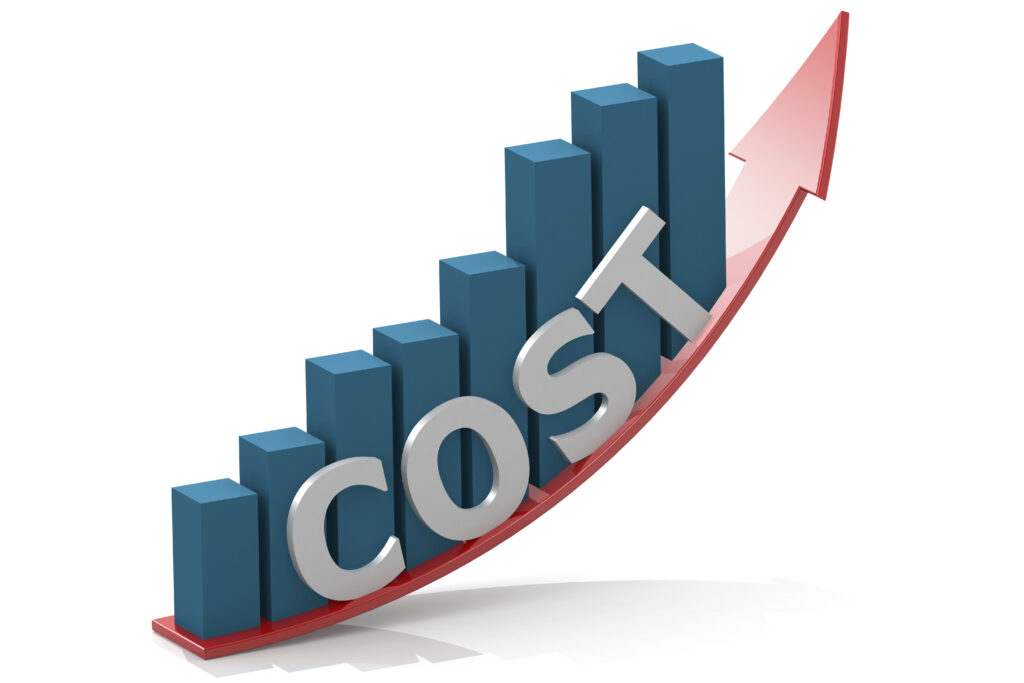Greetings, CA aspirants! Are you ready to delve into the fascinating world of standard costing, a powerful tool for cost management that’ll impress even the most discerning examiner? Fear not, for this blog post is your one-stop shop for understanding this crucial concept. We’ll break down the complex into clear, bite-sized pieces, with examples and formulas explained in a way that makes them logical and easy to grasp. So, buckle up and prepare to unleash your inner cost control champion!
Table of Contents
What is Standard Costing?

So, why go through the extra effort of setting up standards? Here are some compelling reasons:
- Cost Control: By comparing actual costs to standards, you can identify variances (differences). These variances act as red flags, highlighting areas where costs are exceeding expectations. This early detection allows you to take corrective action and prevent financial surprises.
- Performance Management: Standards serve as benchmarks for measuring efficiency and productivity. You can track how well your team is performing against these targets and identify areas for improvement.
- Inventory Valuation: Standard costing helps value inventory at its expected cost, leading to more accurate financial statements.
- Product Costing: Standards provide a basis for costing new or revised products, aiding in pricing decisions and profitability analysis.
Unveiling the Magic: Standard Costing Formulas
Now, let’s dive into the heart of the matter – the formulas! But before we do, remember, that these formulas are not meant to be memorized blindly. Instead, understand the logic behind them, and you’ll be able to derive them yourself, impressing even the most skeptical examiner.
1. Standard Cost per Unit:
This formula tells you the expected cost of producing one unit of your product.
Standard Cost per Unit = Direct Material Standard + Direct Labor Standard + Manufacturing Overhead Standard per Unit
Logic: We simply add the standard costs of each element that contributes to the final product.
Example:
- Direct Material Standard: $5 per unit
- Direct Labor Standard: 2 hours at $10 per hour = $20 per unit
- Manufacturing Overhead Standard per Unit: $8 per unit
Therefore, Standard Cost per Unit = $5 + $20 + $8 = $33
2. Price Variance:
This formula shows the difference between the actual price paid for direct materials and the standard price.
Price Variance = (Actual Price per Unit – Standard Price per Unit) * Actual Quantity Purchased
Logic: We multiply the price difference by the actual quantity to see the overall impact on cost.
Example:
- Actual Price per Unit: Rs5.50
- Standard Price per Unit: Rs5
Therefore, Price Variance = (Rs5.50 – Rs5) * 1000 units (assuming 1000 units purchased) = Rs500 (Favorable variance, as the actual price was lower than expected)
3. Quantity Variance:
This formula reveals the difference between the actual quantity of direct materials used and the standard quantity allowed for production.
Quantity Variance = (Actual Quantity Used – Standard Quantity Allowed) * Standard Price per Unit
Logic: We multiply the quantity difference by the standard price to understand the cost impact of using more or less material than expected.
Example:
- Actual Quantity Used: 1050 units
- Standard Quantity Allowed: 1000 units
Therefore, Quantity Variance = (1050 units – 1000 units) * Rs5 per unit = Rs250 (Unfavorable variance, as more material was used than expected)
4. Labor Rate Variance:
The variation between the standard hours permitted for production and the actual hours spent by direct labor is represented by this formula.
Labor Rate Variance = (Actual Wage Rate – Standard Wage Rate) * Actual Hours Worked
5. Labor Efficiency Variance:
This formula shows the difference between the actual hours worked by direct labor and the standard hours allowed for production.
Labor Efficiency Variance = (Actual Hours Worked – Standard Hours Allowed) * Standard Wage Rate
Logic: We multiply the hour difference by the standard wage rate to understand the cost impact of taking more or less time than expected to produce units.
Example:
- Actual Hours Worked: 220 hours
- Standard Hours Allowed: 200 hours
Therefore, Labor Efficiency Variance = (220 hours – 200 hours) * Rs10 per hour = Rs200 (Unfavorable variance, as more labor hours were used than expected)
6. Overhead Spending Variance:
This formula reveals the difference between the actual overhead incurred and the standard overhead allowed for production.
Overhead Spending Variance = (Actual Overhead Cost – Standard Overhead Cost)
Logic: We simply compare the actual cost incurred with the expected cost to see if there were any deviations.
Example:
- Actual Overhead Cost: Rs18,000
- Standard Overhead Cost: Rs17,500
Therefore, Overhead Spending Variance =Rs18,000 – Rs17,500 = Rs500 (Unfavorable variance, as actual overhead costs exceeded the standard)
7. Overhead Volume Variance:
This formula shows the difference between the standard overhead applied based on the actual level of production and the standard overhead allowed for the actual production level.
Overhead Volume Variance = (Actual Level of Production – Standard Level of Production) * Standard Overhead Rate per Unit
Logic: We multiply the production difference by the standard overhead rate to see how changes in production volume impact overhead costs.
Example:
- Actual Level of Production: 1,100 units
- Standard Level of Production: 1,000 units
Therefore, Overhead Volume Variance = (1,100 units – 1,000 units) * Rs8 per unit = $80 (Favorable variance, as the actual production level exceeded the standard, leading to lower overhead absorption per unit)
Remember: These are just a few key formulas. Depending on your specific industry and cost accounting system, you might encounter other variances and formulas. However, by understanding the logic behind these core concepts, you can easily grasp the essence of standard costing and apply it to various scenarios.
Key Takeaways:
- Standard costing is a powerful tool for cost control, performance management, inventory valuation, and product costing.
- Standard costs are predetermined estimates of the expected cost of direct materials, direct labor, and manufacturing overhead.
- Variances (differences between actual and standard costs) act as red flags, highlighting areas for cost control and improvement.
- Understanding the logic behind standard costing formulas is more valuable than simply memorizing them.
Frequently Asked Questions:
Q: What are the limitations of standard costing?
A: Standard costing relies on assumptions, and changes in market conditions or production processes can render standards inaccurate. It’s essential to periodically review and update standards to maintain their effectiveness.
Q: How often should standards be reviewed?
A: The frequency depends on factors like industry volatility, material price fluctuations, and production process changes. As a general rule, review standards at least annually, or more often if significant changes occur.
Q: Can standard costing be used for service businesses?
A: Yes, with some modifications. The core principles of standard costing can be adapted to service industries by defining appropriate standards for direct costs like labor and materials used in service delivery.
Q: Where can I find more resources on standard costing?
A: Many accounting textbooks and online resources cover standard costing in detail. The Institute of Management Accountants (IMA) also offers valuable resources and certifications in cost management.
Standard Costing Formulas:
- Standard Cost per Unit: Direct Material Standard + Direct Labor Standard + Manufacturing Overhead Standard per Unit
- Price Variance: (Actual Price per Unit – Standard Price per Unit) * Actual Quantity Purchased
- Quantity Variance: (Actual Quantity Used – Standard Quantity Allowed) * Standard Price per Unit
- Labor Rate Variance: (Actual Wage Rate – Standard Wage Rate) * Actual Hours Worked
- Labor Efficiency Variance: (Actual Hours Worked – Standard Hours Allowed) * Standard Wage Rate
- Overhead Spending Variance: (Actual Overhead Cost – Standard Overhead Cost)
- Overhead Volume Variance: (Actual Level of Production – Standard Level of Production) * Standard Overhead Rate per Unit
With this knowledge and the dedication to apply it, you’ll be well on your way to becoming a cost control champion! Remember, practice makes perfect, so don’t hesitate to experiment and explore different scenarios to truly master the magic of standard costing. Good luck
Mantra for understanding the logic behind standard costing formulas:
Think in terms of comparisons and impacts:
- Price Variance: Compares the actual price paid to the expected price, and the impact is on the overall cost per unit based on the quantity purchased.
- Quantity Variance: Compares the actual quantity used to the expected quantity, and the impact is on the cost per unit based on the standard price.
- Labor Rate Variance: Compares the actual wage paid to the expected wage, and the impact is on the total labor cost based on the actual hours worked.
- Labor Efficiency Variance: This compares the actual time taken to the expected time, and the impact is on the total labor cost based on the standard wage rate.
- Overhead Spending Variance: Compares the actual overhead incurred to the expected overhead, highlighting the overall deviation.
- Overhead Volume Variance: Compares the standard overhead applied based on actual production to the standard overhead allowed for actual production, showing the impact of production volume on overhead absorption per unit.
Remember:
- Standard Cost per Unit is the foundation, built upon individual standard costs of each element.
- Variances are calculated by finding the difference between actual and standard values, then multiplying by a relevant factor (quantity, hours, etc.) to understand the cost impact.
By consistently applying this comparative and impact-focused approach, you can not only derive the formulas yourself but also grasp the underlying logic, making them easier to remember and apply in different scenarios. This understanding will prove invaluable during your exams and throughout your accounting journey!


Pingback: Conquer the Process Costing Maze: Normal vs. Abnormal Loss & Ace your Exams!